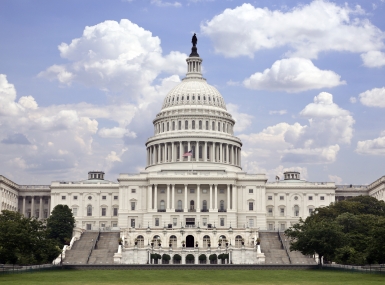Strategies for balancing the budget
Author
Upcoming Events
Related News

As county governments begin to address large revenue shortfalls and significant gaps in their budgets, commissioners, executives, finance and budget staff and leaders from across every department in your organization will need to work together to consider both the short and long-term implications of budget reduction strategies.
GFOA has developed a 12-step guide to financial recovery as part of our overall fiscal first aid resources (available online at www.gfoa.org/ffa). These resources recognize the various stages of financial distress and highlight potential treatments that county governments can take. However, these treatments are not without risk. In solving the immediate budget crisis, leaders must make sure they also don’t jeopardize their long-term financial stability or hurt the prospects for financial recovery.
In early March, when the pandemic first caused shutdown orders and forced many to work from home, governments had to take short-term action to reduce spending, manage cash flow and identify how to maintain critical operations. As the economy starts to re-open, and as governments begin to grasp both the depth and longevity of this financial crisis, more severe budget-balancing strategies will be necessary.
Not every government will be in the same situation, however. With county governments getting revenue from a mixture of different sources and with the different level of impact that COVID-19 has had on different locations, the required severity of budget treatments will differ. This article highlights several common fiscal first aid treatments and the risks to consider for each. Treatments are categorized by type but are presented in no particular order. GFOA also understands that every local government may have unique risk factors or situations in your community to address so there is no one-size-fits-all approach to budget balancing.
Personnel costs
For many governments, personnel costs can make up 70 percent or more of total expenses, so any discussion about closing a large budget shortfall must include salary cost savings. Governments, however, can use different strategies such as freezing vacant positions, better managing overtime or address health care costs before considering more severe measures like wage freezes, hiring freezes, reduction in hours or ultimately layoffs.
Caution: With riskier approaches (furloughs, hiring freeze or wage freeze), governments risk driving away their more talented staff. The broad nature of these programs often results in productivity losses greater than cost savings, large drop in employee morale and tendency for staff to begin sacrificing organizational goals for personal or department gains.
Purchasing practices
Vendors and suppliers present another opportunity for savings. Governments can use this opportunity to renegotiate or rebid contracts, audit routine purchases, or eliminate non-essential contracts. However, the largest improvement that governments can make with purchasing practice is to strictly adhere to policy. Many governments have purchasing policies that require use of purchase orders, competitive bids or board approval. By routing all transactions through a purchasing process, spending can be tracked and staff can receive timely information to monitor the current budget situation. In times of financial crisis, it is essential that managers have current and accurate information for budget monitoring.
Caution: Purchasing policies that require approvals should not overburden transactions with unnecessary approvals. Managers must be allowed to manage and putting unreasonable approval processes in place for all transactions will only increase the costs of operations.
Asset management
Capital projects and large asset or equipment purchases (including software) can present opportunities for savings and are likely very visible examples of current spending. Strategies like extending the useful life of assets, deferring maintenance or postponing projects can provide savings opportunities.
Caution: In the short term, these strategies can provide relief, but as a long-term option, they present significant risks. Extending asset beyond its useful life or deferring maintenance can lead to higher long-term costs or drop in service level from non-functioning equipment. In addition, delayed projects may also delay opportunities for efficiency gains (for example from software modernization efforts).
Sharing resources
Governments have a tendency to operate as a collection of siloed departments. Significant saving opportunities can come from sharing more resources and greater collaboration. For example, unused equipment can be transferred to another department, inventory can be jointly managed or staff can transition to assist with peak work periods. In addition, governments may find opportunities to partner with other governments, non-profits or private organizations. For example, governments can work to borrow large equipment from neighboring jurisdictions rather than purchasing the asset or pursue managed competition opportunities for common services.
Caution: Turning over control to another entity or becoming dependent on another organization to provide services adds risk for service delivery. Governments should make sure to work on proper service level agreements or MOUs when sharing resources.
Revenue enhancement
For most counties, the primary cause of the financial crisis will be loss of revenue, not out of control expenses. While actions geared to increasing revenue may be more difficult, options do exist. Governments can work to ensure any federal or state aid that they are eligible for is claimed. Often, these programs have complex requirements and limits. Understanding these rules is important for compliance. Governments may also have opportunities to explore new options for increasing fee revenue or examine and improve existing billing and collection procedures.
Caution: More aggressive bill collection policies should be evaluated with larger community goals in mind. The collection methods used in the private sector may not treat constituents in a way that reflects well on government, especially during an economic downturn when many people are vulnerable
To help in selecting budget treatment options, GFOA has developed a scoresheet that can be used to evaluate different options http://www.gfoa.org/ffa-evaluation-criteria-checklist. However, some strategies should be avoided or explored with extreme caution due to the potential for more damaging long-term effects.
Strategies to avoid
The following budgeting gimmicks should be avoided and can cause long-term consequences for your government that make financial recovery that much more difficult.
Dismantling internal controls: The risk of fraudulent activity generally increases during financial crisis. While some efficiencies may be possible by reducing basic internal controls, it is not worth the financial risk.
Underfunding liabilities: Failing to maintain payments for pension contributions and other future liabilities has long-term consequences. Not only does it add those costs to a future period, the government loses out on investment income, and often creates additional challenges for bond ratings and public perception.
Defaulting on debt payments: In addition to violating your contract with investors, failing to pay creditors would make it all but impossible to borrow in the future.
Early retirement programs: Early retirement incentives seem like a straightforward way to reduce more senior and higher paid employees. In reality, realizing savings is complicated and difficult. Governments must find ways to replace staff and deal with large loss in knowledge. At the same time, retiree costs are shifted to the pension system adding additional costs to the government.
Pension obligation bonds: Pension obligation bonds are complex financing instruments that involve converting pension liabilities to debt where proceeds are invested at a rate (ideally) above the rate on the bonds. However, if investment proceeds fail to cover the cost of the bonds, not only does government still have cost of pension liabilities, but now also has additional debt to repay. To be effective, this strategy requires almost perfect timing of the market. When not done correctly, this has led to some of the more well-known government bankruptcies over the past 15 years.
For more information or additional resources to assist please visit GFOA’s resource centers for fiscal first aid (www.gfoa.org/ffa) and COVID-19 response issues (www.gfoa.org/covid19). This article has been adopted from GFOA’s two recently released “Balancing the Budget” research papers available at www.gfoa.org/ffa. For questions, please contact research@gfoa.org.

Attachments
Related News

County Countdown – Dec. 15, 2025
Every other week, NACo's County Countdown reviews top federal policy advocacy items with an eye towards counties and the intergovernmental partnership.

U.S. Congress passes reconciliation bill: What it means for counties
On July 3, the U.S. Congress passed sweeping budget reconciliation legislation.

U.S. Senate passes amended reconciliation bill text: What it means for counties
On July 1, the U.S. Senate narrowly passed their version of sweeping budget reconciliation legislation.
